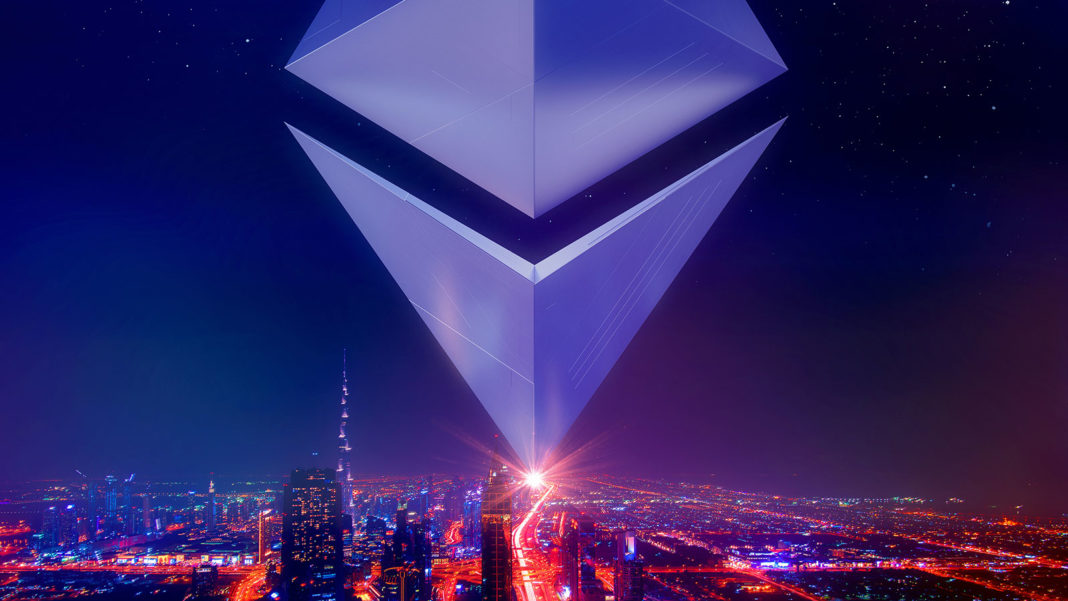The statement, “Ethereum is ultra-sound money,” is a tweet that nearly anyone scrolling a credible cryptocurrency feed on Twitter is bound to see on any given morning, day or night, from a variety of independent accounts. I would argue the statement is true but that isn’t the purpose of this story. Rather this is merely an introduction to the concept of Ethereum and the impact it is currently having and will continue to have on the future of finance, contracts and perhaps many other aspects of life as we know it.
What is Ethereum?
According to The Ethereum Foundation’s website www.Ethereum.Org, “Ethereum is an open access to digital money and data-friendly services for everyone – no matter your background or location. It’s a community-built technology behind the cryptocurrency ether (ETH) and thousands of applications you can use today.”
However, the above statement can be a bit confusing without first having an understanding of what exactly IS Ethereum. Ethereum is similar to Bitcoin as it is a type of software protocol that runs using decentralized blockchain technology. Blockchain is a type of database which stores information in a series of blocks that chain together. Once a given block is filled with data, a new block is created and filled with new data and chained to the previous block and so on. A decentralized blockchain is a type of blockchain that is immutable, meaning that the data entered is irreversible since no single person or entity is in control of the data but rather all users collectively retain control of the blockchain and in doing so, secure it through series of validators run on computers throughout the world.
Currently, like Bitcoin, Ethereum is being secured and functions via Ethereum “miners,” who run computers that solve complex equations and in doing so validate transactions happening on the Ethereum blockchain. By validating those transactions, Ethereum miners are rewarded with Ether. I would encourage you to read my introduction on Bitcoin (April 2021) prior to reading this as it covers some basic concepts of blockchains, mining and blockchain technology.
Anyone with an electronic device that connects to the internet can participate in decentralized blockchains such as Bitcoin and Ethereum. It should be noted that Bitcoin’s blockchain serves as an immutable public ledger of Bitcoin transactions taking place between individuals (peer to peer networks) on the Bitcoin blockchain network. Ethereum shares the same characteristics of Bitcoin — they are both decentralized blockchain protocols using cryptography.
In fact, Ethereum’s original white paper author and brainchild, Vitalik Buterin, was inspired to create Ethereum based on his early experience with Bitcoin. Buterin even co-founded Bitcoin magazine in 2012, three years prior to Ethereum being released. Long-story short, Vitalik saw that while Bitcoin was incredibly useful as a decentralized public ledger for financial transactions, blockchain technology had many more uses beyond peer-to-peer financial exchanges. He then set out to write a scripting language that was general and simple enough (though incredibly complex to conceive) to allow any programmer the ability to develop an application “on top of” the Ethereum blockchain. The variety of applications currently running on Ethereum range from tokens attached to real-world assets such as property, file storage, stocks and lending as well as video games and lest we forget, non-fungible tokens or NFTs. Please Google the term “NFT” if you are unfamiliar as it is a fascinating new form of digital asset.
Ether and ETH
In order to understand Ethereum, it is critical to understand what Ether is. Ether (ETH) is the transactional token that facilitates operations on the Ethereum network also known as the Ethereum Virtual Machine (EVM). Ether is often referred to as “gas” given that is the “fuel” that runs transactions such as those happening via smart contracts. More on those soon. Since these transactions require computing power to operate and computer power isn’t free, Ether is used as the payment. In a sense Ethereum can both be seen as a cryptocurrency as it is transactional in nature and relies on cryptography, and as a commodity in that Ether is required to actually run the computational transactions taking place. The government currently classifies Ether as a commodity given both the unique nature of Ether as a gas and because it runs a decentralized protocol that no one owns, thus cannot be considered a security or stock like that of a private or public company run by specific individuals whose actions drive the value of the company.
When you hear someone is “investing in Ethereum” or “buying Ethereum,” what they are actually buying is Ether or ETH. The purpose of buying Ether could be as an investment to be bought and sold for profit using a cryptocurrency exchange like Coinbase or used strictly to interact with the various protocols on the Ethereum blockchain. For example, those who want to earn money on deposits or want to borrow assets on the open-source protocol AAVE. As of this writing, AAVE currently has nearly 6 billion dollars of value locked in it’s protocol that is used for borrowing, lending and earning interest.
Apps and Dapps
In understanding new concepts like Ethereum, it always helps me to use an analogy. Do you remember when Steve Jobs started talking about “apps” on his newly introduced iPhone? I recall the first time hearing the definition of an “app” from my friend, Paul Seim. He described it to me as a program on my computer and on a cell phone, but better. He explained to me what the Garage Band app was and how the iPhone could run all different types of applications similar to it. We take apps for granted now, but it wasn’t that long ago that “smartphones” meant that you send and receive emails and the really cool ones had a stylus that you could draw rudimentary shapes with. Today someone can control the temperature of their home from 1,000 miles away, then record a high resolution video of a bird flying 100 feet away.
Back to Apple. Apple was a pioneer with their intuitive iOS operating system, paired with a minimalistic phone design and maximalist marketing. However, iOS was proprietary, so when the Android operating system came along by Google, it became a fierce competitor offering a more “open-source” system of software that could be installed on a variety of hardware devices (not just Apple) as well as a more inclusive nature for app developers.
I tell this story as in some ways, Ethereum is similar to an open-source operating system that anyone can develop applications for. However, unlike Android, which is owned by the centralized tech giant Google (technically Alphabet), Ethereum is neither owned nor controlled by any one person. Instead applications built on Ethereum are referred to as dapps. Sound familiar? The word dapps refers to decentralized applications and there are currently over 3,000 dapps running on the Ethereum blockchain as of this writing. Unlike apps developed for Android or Apple, these apps are not owned by any team or company and though they may have dedicated development teams, the applications run on a decentralized blockchain, like Ethereum. All dapps on Ethereum use the scripting language Solidity and with this language contracts and protocols can be written and run on Ethereum. These contracts are referred to as smart contracts.
Smart Contracts
A smart contract is a self-executing contract where the terms of an agreement are written in lines of computer code and programmed to exist on a decentralized blockchain, such as Ethereum. The code thus controls the execution of the contract with all transactions being trackable and immutable, just like the public ledger of financial transactions on the Bitcoin blockchain. In other words, smart contracts run on computer code that cannot be changed after the code is written and thus will execute the contract according to the terms written in code. Currently, a majority of smart contracts on Ethereum are being used for different types of financial transactions such as lending. For example, you can choose to lend money to a stranger across the world and do so using a smart contract that executes on code – versus relying on blind trust with the potential of hiring an attorney to legally pursue that person if they break the contract. In the world of decentralized finance (DeFi) and smart contracts you need not trust, only verify. Though financial smart contracts are certainly the largest use cases on Ethereum right now, it is impossible not to see the broad range of use cases blockchains could have in the future. I personally believe smart contracts blockchain technology will be used in our public elections and overall legislative process, as well as our justice system, social media, the global financial system as a whole in addition to many other industries given the almost limitless use cases they can provide and add value.
The advantage of smart contracts over conventional contracts is that smart contracts are far less vulnerable to ubiquitous human corruption, malintent, feigned ignorance, dismissed obligations, general inequitable dealings, reinterpretations of previously agreed upon terms….or the many other age old (and expensive) pitfalls of contractual dealings both in business and our social contract as democratic citizens living in a free world. Can you imagine the peace of mind every day people could have if they knew their legal rights weren’t subjected to the best attorney they could afford but instead to a protocol that provided the same result to everyone in a given circumstance? Oh the fairness and equitability of it! How about the speed and efficiency of a smart contract resolving a problem without the noise and inherent bias of opposing parties arguing with one another after something goes awry? What about the average homeowner whose next insurance claim filed was dictated by a smart contract with terms that both parties agreed to and fully understood ahead of time rather than ultimately being left up to the whims of a claim adjuster who may be having a bad day at your expense. But I digress as we are still in the early stages of smart contracts and the reality of these impacts in the cases I gave above will likely not occur for quite some time.
Future Developments
I will continue to cover Ethereum in future articles including Ethereum 2.0, what problems it solves and the implications solving those problems will have. In the meantime, I encourage everyone to read “The Infinite Machine” by Camilo Russo which gives one of the most comprehensive looks at how Ethereum came to be as well as doing your own research on Ethereum through internet searches, news articles, podcasts or my current favorite, crypto Twitter (ie: following a bunch of influencers who live and breath cryptocurrency). That being said, I will end with the following list.
ETHEREUM: 6 Key Attributes
by The Ethereum Foundation
- It’s really yours: ETH lets you be your own bank. You can control your own funds with your wallet as proof of ownership – no third parties necessary.
- Secured by cryptography: Internet money may be new but it’s secured by proven cryptography. This protects your wallet, your ETH and your transactions.
- Peer-to-Peer payments: You can send our ETH without any intermediary service like a bank. It’s like handing cash over in-person, but you can do it securely with anyone, anywhere, anytime.
- No Centralized Control: ETH is decentralized and global. There’s no company or bank that can decide to print more ETH, or change the terms of use.
- Open to Anyone: You only need an internet connection and a wallet to accept ETH. You don’t need access to a bank account to accept payments.
- Available in flexible amounts: ETH is divisible up to 18 decimal places so you don’t have to buy 1 whole ETH. You can buy fractions at time- as little as 0.000000000000000001 ETH if you want.







